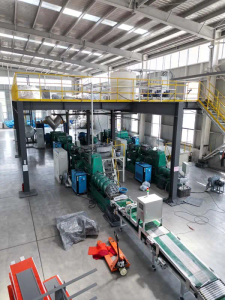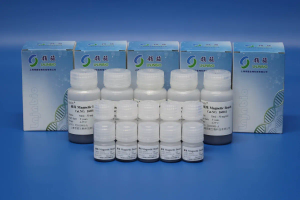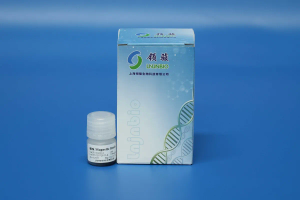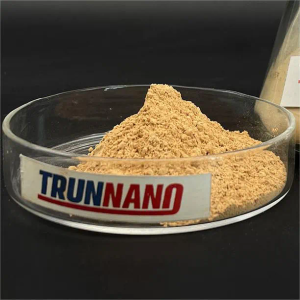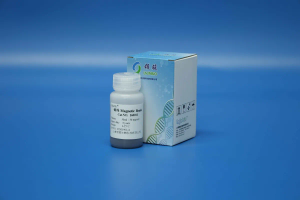ATO (Antimony Tin Oxide)- Applications in Conductive Coatings
p Antimony Tin Oxide (ATO) is an important material in the realm of conductive coatings, known for its unique properties that combine both conductivity and transparency. The interest in ATO has surged due to the growing demand for electronic applications, energy-efficient devices, and advanced coatings in various industries. This article delves into the characteristics, synthesis methods, and diverse applications of ATO in conductive coatings.
h2 Introduction to ATO
p Antimony Tin Oxide is a mixed metal oxide comprised of tin oxide (SnO2) and antimony oxide (Sb2O3). It is typically produced through various synthesis methods that result in nanoparticles with high surface area and unique electrical properties. ATO exhibits excellent optical transparency in the visible spectrum while maintaining good electrical conductivity, making it ideal for a wide range of applications, particularly in the field of coatings.
h2 Properties of ATO
p The electrical conductivity of ATO is attributed to the presence of antimony, which acts as a dopant in the tin oxide lattice. This doping enhances the charge carrier concentration, leading to improved conductivity. The ratio of antimony to tin can be adjusted during synthesis, allowing for tunable electrical properties. ATO also boasts optical properties that make it suitable for applications where visibility is crucial, including touchscreens and solar cells.
h3 Conductivity
p The conductivity of ATO can vary based on several factors, including the preparation method, the ratio of antimony to tin, and the annealing process. Generally, ATO films exhibit lower resistivity compared to pure tin oxide, making them more effective in conductive applications.
h3 Optical Transparency
p ATO coatings are known for their high transparency in the visible light range, typically exceeding 80%. This property is essential for applications requiring both conductivity and visibility, such as transparent electrodes in display technologies.
h2 Synthesis Methods
p Various methods exist for synthesizing ATO, each resulting in different particle sizes and morphologies. Common techniques include sol-gel processes, spray pyrolysis, and hydrothermal synthesis.
h3 Sol-Gel Method
p The sol-gel process involves the transition from a liquid solution to a solid gel phase. This method allows for precise control over the composition and microstructure of ATO, providing a homogeneous distribution of antimony within the tin oxide matrix. The resulting films can be deposited on a variety of substrates, making this method highly versatile.
h3 Spray Pyrolysis
p In spray pyrolysis, a precursor solution is atomized into fine droplets and then heated to form nanoparticles. This method is advantageous for producing large-area coatings with uniform thickness. It is widely used in industrial applications for creating conductive films on glass and plastics.
h3 Hydrothermal Synthesis
p Hydrothermal synthesis involves the use of high-pressure and high-temperature conditions to facilitate the growth of ATO crystals. This method typically yields high-purity materials and can produce well-defined shapes and sizes, which are critical for specific applications.
h2 Applications of ATO in Conductive Coatings
p ATO’s unique properties make it suitable for numerous applications across different fields. Below are some key areas where ATO is extensively utilized.
h3 Transparent Conductive Films
p One of the most prominent applications of ATO is in the production of transparent conductive films (TCFs). These films are crucial components in various electronic devices, including touchscreens, LCDs, and OLED displays. ATO serves as an excellent alternative to indium tin oxide (ITO), especially in applications where flexibility and cost-effectiveness are paramount.
h3 Photovoltaic Devices
![]()
p ATO is also employed in photovoltaic devices, particularly in thin-film solar cells. Its transparency allows sunlight to pass through while providing the necessary conductivity for efficient charge transport. The use of ATO can enhance the overall efficiency of solar cells by reducing reflection losses and improving light absorption.
h3 Anti-Static Coatings
p In environments sensitive to static electricity, ATO-based coatings are applied to surfaces to reduce static buildup. These coatings are particularly valuable in electronic manufacturing facilities, where static discharge can damage sensitive components.
h3 Heating Elements
p ATO can be utilized in heating applications due to its ability to convert electrical energy into heat. ATO coatings can be applied to windows or other surfaces to provide flexible heating solutions, enhancing energy efficiency in buildings.
h2 Environmental Impact and Sustainability
p As the world becomes increasingly focused on sustainability, the environmental impact of materials used in technology cannot be overlooked. ATO presents a more sustainable option compared to traditional conductive materials, as it is less reliant on rare elements like indium. Moreover, the production processes for ATO can be optimized to minimize waste and energy consumption.
h3 Recycling and Reusability
p The recyclability of ATO-coated materials is an important consideration in the development of sustainable technologies. Research is ongoing to explore efficient recycling methods for ATO-coated substrates, which could significantly reduce the ecological footprint of electronic devices.
h2 Future Trends and Innovations
p The future of ATO in conductive coatings looks promising, with ongoing research aimed at enhancing its properties and expanding its applications. Innovations in nanotechnology and material science are expected to lead to new formulations and hybrid materials that leverage the strengths of ATO while addressing its limitations.
h3 Hybrid Coatings
p Combining ATO with other conductive materials, such as carbon nanotubes or graphene, is a burgeoning area of research. Such hybrid coatings can offer enhanced conductivity, mechanical strength, and flexibility, opening up new avenues for application in advanced electronics.
h3 Smart Coatings
p The integration of ATO into smart coatings is another exciting trend. These coatings can respond to environmental stimuli, such as temperature or light, making them ideal for applications in smart windows, sensors, and energy management systems.
h2 Conclusion
p Antimony Tin Oxide (ATO) stands out as a versatile and valuable material in the field of conductive coatings. Its unique combination of electrical conductivity and optical transparency makes it a preferred choice in various technological applications. MoDTP Cas No.:72030-25-2 As industries continue to seek innovative and sustainable solutions, ATO is poised to play a crucial role in the development of next-generation electronic devices and advanced coatings. With ongoing research and technological advancements, the potential applications of ATO will undoubtedly expand, paving the way for a more efficient and sustainable future.
https://oaicon.com/
